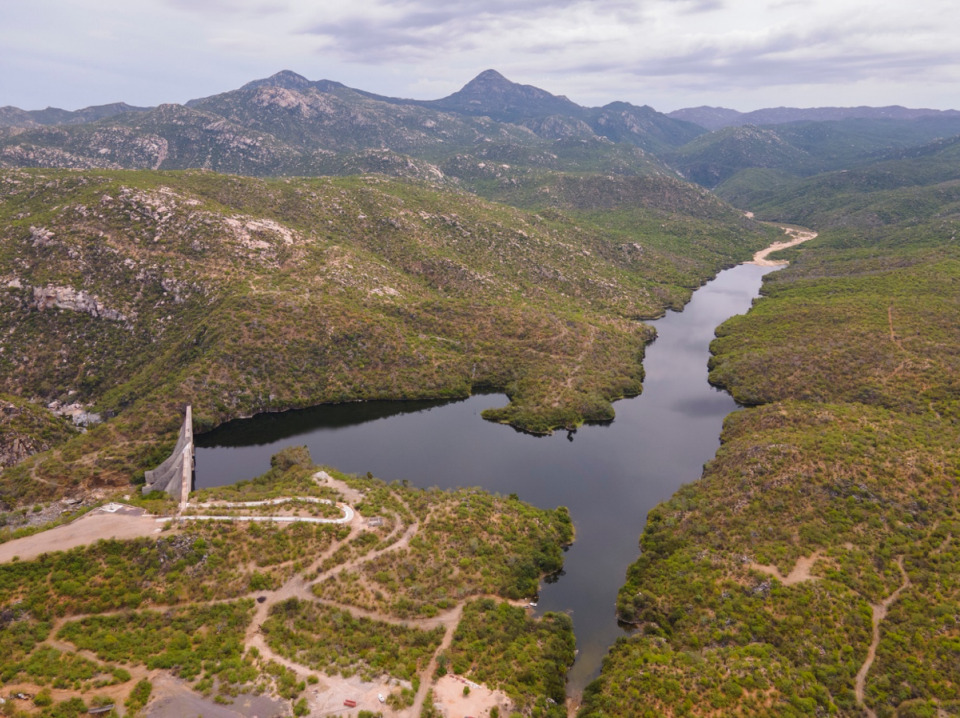The water is a basic input for life, and in the state of Baja California Surincluding its capital La PazThe water is a scarce resource that must be taken care of for the good of all its inhabitants.
In the La Paz Conscience Forum was presented the research entitled The Water Problem in La Paz, Baja California Sura scholarly work developed by Mara Yadira Cortés Martínez, Jobst Wurl, José Antonio Pérez Venzor, Karen Velázquez Pedroza, Yersinia Olvera Vidal, Francesca Pancaldi, Enrique Troyo Diéguez, Janette Magali Murillo Jiménez, Alejandra Irasema Campos Salgado, María Z. Flores López, coordinated by the latter.
This research shows that in development poles such as La Paz, Los Cabos and Loreto, water is a resource that is not only scarce but also overexploited.
"In the La Paz watershed, precipitation and surface runoff are scarce. Most of the water sources are in the subsoil and have a slow renewal," they indicate.
This city, the research reveals, has a deficit of 100 liters of water per second, partly due to problems derived from extraction, lack of orderly sectorization and leaks.
"There are technical problems, silting of wells and obsolescence of pipes of an old and aging public network, whose modernization requires a high investment in hydraulic infrastructure and storage tanks," the document states.
The problem, he adds, is that the water utility in the municipality of La Paz is in a critical financial state, with debts generated in the past and little income.
Harmful or potentially toxic materials
The research indicates that another problem is the contribution of materials transported by temporary or torrential runoff, which may contain harmful or potentially toxic elements, such as arsenic, sulfur, mercury, lead, uranium, vanadium, medicines, protozoa, among others.
These put at risk the ecological balance of the species and productive activities and affect the health of the flora, fauna and the inhabitants who depend on and/or feed on products from these bodies of water, he says.
"Arsenic concentrations in groundwater in Mexico and the world is a problem and is due to different factors, mainly anthropogenic (human activities) and natural. Baja California Sur is no exception," he says.
In addition, saltwater intrusion in the La Paz aquifer was first recognized in the 1970s, but the process of overexploitation continued.
"A lot of studies have been done since then, but there is still controversy about the severity of the problem," he says.
Water treatment for reuse
The research highlights that wastewater treatment is a priority issue for the environment and health, since scarcity makes it necessary to value this resource as an alternative source.
The document details that, in the municipality of La Paz, there are four active wastewater treatment plants, which treat 417.7 liters per second.
"Wastewater Treatment Plants perform a very important task by improving the quality of water to be reused for different types of uses, thereby counteracting the overexploitation of aquifers and surface sources," he says.
The academics emphasize that it is necessary to promote the reuse and exchange of treated wastewater, substituting first-use water, mainly in industrial and agricultural activities, thus promoting sustainable development.
"Investment needs in the drinking water and sanitation sector are enormous, and work must be done on wastewater management in the region, massive programs for its collection and treatment. Future urban development needs approaches that minimize resource consumption and focus on resource recovery. In this context, wastewater is and should be considered a valuable resource from which energy and nutrients can be extracted, as well as an additional source of water," they say.
The research warns that water conflicts, which are already very serious at this point, will become more and more acute and are no longer just conflicts over water, but also have environmental and other aspects that compromise the development of the state.
The governance and management capacity in this area is already in crisis and will worsen as long as there are no substantial changes, so they propose measures to attack the problem, including the following:
Proposals
- Determine the volumes of surface and groundwater in the watersheds that drain into the bay and lagoon of La Paz.
- Identify potential sources of water and sediment contamination in the water bodies of the bay and lagoon of La Paz, through elemental analysis of sediments from streams, beaches, flood plains, mangrove areas and seabed, elemental analysis of wastewater from the CFE electricity generating plant, the Roca Fosfórica Mexicana mining plant, private desalination plants, water from beach wells and hydrothermal water as in the case of the coastal area in the town of El Sargento.
- Monitoring of desalination waste at some coastal sites for drinking water, such as the coast of the Pichilingue Peninsula.
- Implement the La Paz Integrated Watershed Management Action Plan (PAMIC), a comprehensive tool with a systemic approach that identifies priority actions to conserve our watershed and groundwater, as well as the people and institutions that can implement them.
- Include water use and reuse in urban planning.
- Preparation of a consensus opinion on the feasibility and risks of desalination plants.
- Construction and updating of key indicators on water availability and quality in critical aquifers, administered in the form of quarterly, four-monthly or six-monthly reports by CEA and COSCYT, with the participation of sector entities and higher education institutions.
- Identify the high concentrations of arsenic and ions such as chlorides and sodium, with this information a distribution map of the concentrations can be made and later it can be known which concentrations exceed the maximum permissible limits established by NOM-127.
- Community outreach talks to keep the population informed of the current water quality situation.
- Immediate attention to WWTPs, since the nutrients contained in treated wastewater are vital for the reuse of green areas, reducing the use of first-use water.
Source: ConCiencia La Paz Forum


